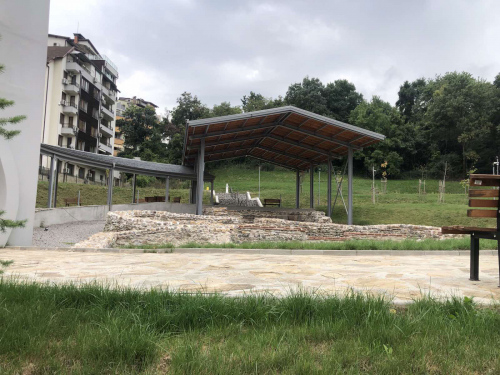The Roman mausoleum
Location: 42.675504800982445, 23.315705872998453
Objects nearby: South Park
Public object / Private object: Public
 The Roman mausoleum
The Roman mausoleumThe mausoleum dates back to the Roman era, it was discovered in 2001 by accident, during the preparation of a construction site. In connection with the massive construction site in the area, a survey was also carried out for the presence of archeology on a 3000 sq.m. The site has been declared an archaeological monument of culture with a preliminary category of "national importance". The object is being conserved, and the space around it has been refined.
The Roman mausoleum is a rectangular vestibule from the north, consisting of three rooms. The central rectangular part has a conch at each end. In its southernmost part, there is an actual burial chamber - a crypt, with three massive stone sarcophagi. During the archaeological excavations, coins and ceramics were found, a gold belt end in the sarcophagi and a fragmented glass cup of the Diatreta vase type - the third example in Bulgaria. It seems that the members of a noble family from Serdika were buried here.
The mausoleum dates from the period between the last quarter of the 3rd century and the third quarter of the 4th century.
A visitor center was built by the Municipality of Sofia with an adjacent playground.



